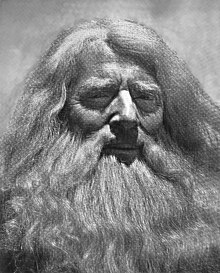George Foster Herben
Herben developed and published several new treatments during this time, including a replacement for conventional iron lungs.
[1][2] His father was Stephen J. Herben, a minister and editor, and a close friend of Thomas Edison who conducted the service at his burial in 1931.
[2] He was the older of two children; Stephen J. Herben Jr., who became a philologist at Bryn Mawr College, was born four years later.
[10] The two had left to go target shooting along with Stephen J. Herben Jr. on the lake shore just north of Evanston, Illinois,[11] when George, whose rifle had become jammed, handed it to his mother for inspection; in the process the gun fired, lodging a bullet about Grace Herben's left knee.
[20] He graduated in June 1916 with a Bachelor of Science;[21][22] in the yearbook's so-called "Roll of Honor", he was teased as "The ones with distinguished friends—Foster Herben, 'Me and Edison.
[26] Following a short vacation in the Adirondacks, where his family had a cottage at Big Moose Lake,[27][28] Herben began his career in 1921 as an intern at the Brooklyn Hospital.
[31][32] Herben later worked for many years at the House of Rest at Sprain Ridge, a church-affiliated tuberculosis hospital and preventorium in Yonkers, New York.
One such treatment, displayed at the annual meeting of the National Tuberculosis Association in 1948,[36] and published in the Journal of the American Medical Association in 1949,[37][38] was designed to replace conventional iron lungs by placing patients in a pressurized chamber which forced air into, and out of, a patient, without the use of their lungs.
[43] Herben served as the Governor for the organization's New York chapter as of 1945, when he presented it with a plan for postgraduate medical education for physicians leaving the armed services after World War II.

